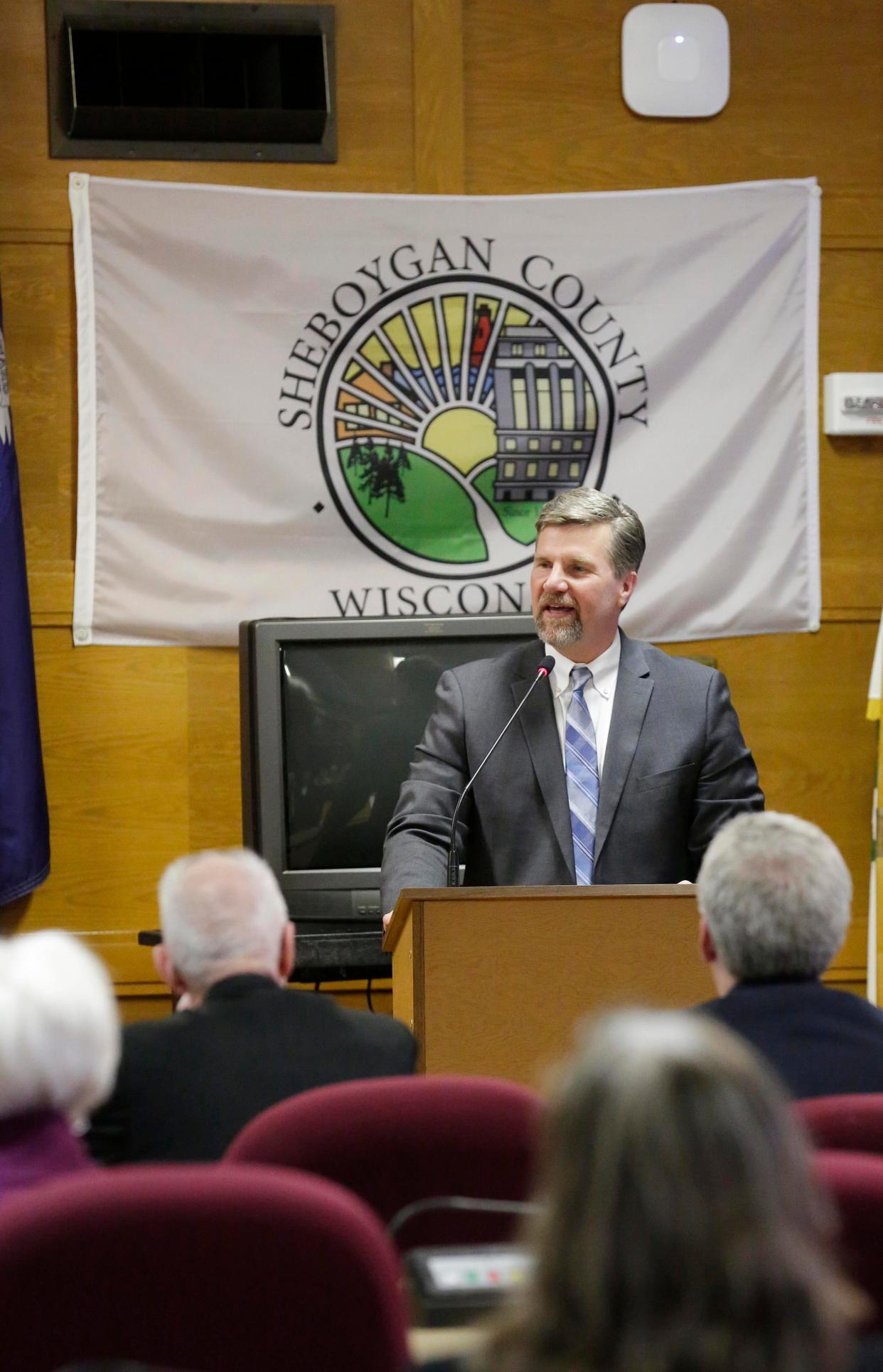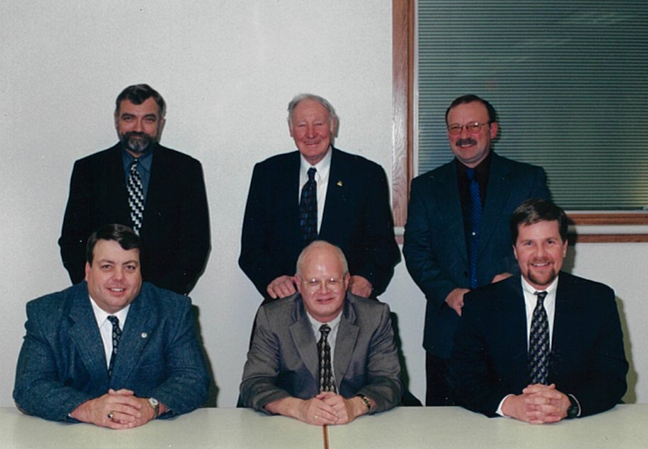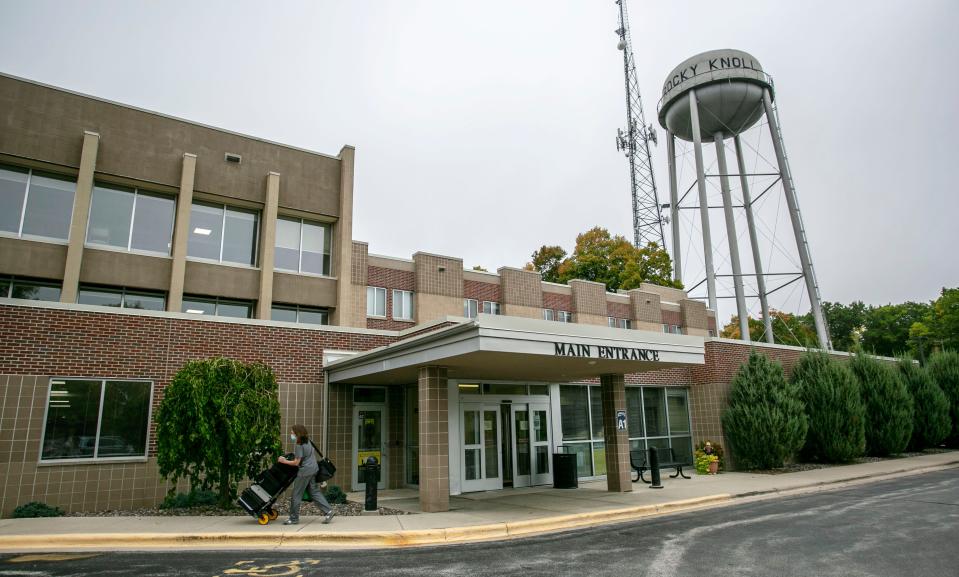Adam Payne reflects on 24 years as Sheboygan County administrator and shares challenges to come as he takes new role as Wisconsin DNR secretary

SHEBOYGAN - After 24 years, Tuesday was Adam Payne’s last day as Sheboygan County administrator.
Three months ago, Payne announced he would resign from the position in March to join the Wisconsin Counties Association. His departure was fast-tracked when Gov. Tony Evers instead appointed Payne to become secretary of the state Department of Natural Resources last week.
The county is already working with an outside recruiting firm to hire the next county administrator and will not rush the process, board chairman Vernon Koch said. Koch hopes the executive committee will have selected a top candidate that the full board can vote on by the Feb. 21 board meeting.
Payne essentially became the first county administrator when he was hired in 1998. Since then, he has created a collaborative process to develop the annual budget that stands out in the state and has overseen significant county accomplishments, such as cleaning up the Sheboygan River, improving county roads, holding the line on property taxes, and establishing a wetland mitigation bank at Amsterdam Dunes at essentially no cost to the county, among other things, Koch and other county board members said.
Payne was a great communicator, a team player and an optimist. He always looked for the best in people and always looked for ways to make the county more efficient, said longtime county board member Bill Goehring.
“He helped us work as a team,” board member Roger Te Stroete said.
Koch said he appreciated Payne’s “very nonpartisan take.”
“He didn’t lean one side of the aisle or the other. He had a good relationship with Republican state representatives as much as a Democratic governor,” Koch said. “I think that in this day and age, that is a very valuable trait to have for somebody like a county administrator.
“Everything seems to be looked at through a partisan lens right now and I don’t think that’s helpful for getting things done, or benefits everyone,” Koch said.
Payne echoed that message, saying he is leaving the county in “good hands.”
“I’m really pleased with our county board. When I started, I think there was more D and R, city and county (division),” said Payne, who described himself as more of an Independent. “We truly work in collaboration as a team. … We focus on the problem and work together to problem solve.”

Top 10 achievements of Sheboygan County since 2000
Payne highlighted a list of "collective accomplishments" he is most proud of initiating or supporting as county administrator, including the following:
Maintaining a strong fiscal track record. For more than a decade, the average annual percentage change in Sheboygan County’s property tax levy has been just 1.29%. Payne has not only helped coordinate the budget process, which is one of the county administrator’s primary responsibilities, but starts the process early and engages the county board throughout the year, well before the final vote in November. That’s unique compared to most other counties in the state, Koch said.
Cleaning up the Sheboygan River and harbor. Sheboygan County was one of a handful of key groups to initiate and contribute funding toward clean-up and dredging of the lower Sheboygan River and harbor, which had been designated a hazardous waste site by the Environmental Protection Agency as a result of PCB contamination. Multiple dredging projects removed approximately 20,000 truckloads of contaminated sediment from the river, with the total cost of all projects reaching around $100 million. Since then, nearly 300 new housing units built near the river equate to investments of more than $60 million for the county.
Adding science, library and engineering facilities at UW-Sheboygan. Sheboygan County contributed millions of dollars to constructing the Brotz Science Building, which opened in 2004; the Acuity Technology Center, completed in 2007; and a new engineer facility that opened in 2015.
Using a 0.5% county sales tax to fix roads. The county enacted a 0.5% sales tax in 2016 — after most other counties in the state had done so — and targeted the money for maintaining roads and lowering borrowing. The county also shares some of the revenue with municipalities to support roads and transportation infrastructure, the first county in the state to do so.
Combining dispatch and upgrading the emergency radio system. In 2016, the county completed a nearly $15 million project to combine dispatch for law enforcement, fire and emergency medical services, as well as upgrade to a new digital radio system with better coverage and voice clarity.
Coordinating the COVID-19 pandemic response. Sheboygan County established a panel of county staff, public health professionals, emergency responders, hospital presidents, school administrators and community stakeholders to coordinate a county COVID-19 response. The Division of Public Health publicized data, provided nearly 10,000 vaccinations, coordinated testing and launched a testing site, among other things.
Establishing a Wetland Mitigation Bank and Preservation Area at Amsterdam Dunes. Sheboygan County bought and will restore Amsterdam Dunes, a 330-acre property in the town of Holland and one of the last undeveloped shorelines between Sheboygan and Chicago, at no cost to taxpayers. The project will also benefit local businesses, which can buy wetland credits from the Amsterdam Dunes "bank" to offset impacts of wetland destruction during development.
Expanding residential treatment facilities, opioid and mental health services. The county has continually expanded opioid, substance abuse and mental health services, including establishing an Opioid Detoxification and Treatment Program in 2017, expanding opioid treatment options and discharge planning for people in jail and collaborating with Vista Care, Inc., in 2020 to open three new mental health and substance abuse residential treatment facilities in Sheboygan.
Completing the State 23 expansion. The long-awaited expansion to improve safety was completed in Sheboygan County in 2021.
Maintaining quality facilities and service at Rocky Knoll Health Care Center. Rocky Knoll has earned consecutive five-star ratings from the Centers for Medicare and Medicaid Services. The county has continually invested in facility upgrades at the nursing home (totaling in the millions) and other improvements, such as offering onsite child care to help attract and retain staff.
More:Here are Sheboygan, Plymouth, Sheboygan Falls seats up for grabs in spring elections
Challenges ahead include retaining staff and reforming government funding, Payne says

The county’s ability to recruit and retain staff is one of Payne’s top concerns for the years ahead, as businesses and organizations statewide grapple with staff shortages.
The county has used federal COVID-19 relief funds to raise wages for CNAs, nurses, dispatchers and correctional officers, but those funds will run out by 2025 or 2026.
Another issue — which goes hand in hand with being able to recruit and retain staff — is funding reform for local governments, a “huge are of need and importance” for not only Sheboygan County but local governments across the state, Payne said.
The state continues to mandate important programs and services, but has not kept up with the cost, he said.
Since 2009, revenue limits implemented by the state have tied county annual property tax levy increases to net new construction.
Net new construction has been averaging around 1% in Sheboygan County. That simply isn’t sufficient to keep up with increasing costs, Payne said.
“Personally, I don’t think all caps are bad,” he said. “We made some decisions in this county that we may not have otherwise made without those caps. For example, downsizing from three nursing homes to one. ... But today, I can tell you the caps have become too onerous and aren’t allowing elected officials to be as thoughtful about the delivery of programs and services and meeting the needs of the community.”
Over the past two decades, county departments have already downsized from a total of 34 departments to 19 and from 1,350 employees to about 850.
Payne is writing a report with other local government leaders recommending that the state share more revenue with local governments to maintain services.
One hundred years ago, the state returned about 90% of money collected from taxpayers back to local government. Today, the state returns less than 10%, he said.
Payne is optimistic state legislators will implement some type of reform.
Reach Maya Hilty at 920-400-7485 or MHilty@sheboygan.gannett.com.
This article originally appeared on Sheboygan Press: Wisconsin DNR Secretary Adam Payne reflects on Sheboygan County role

